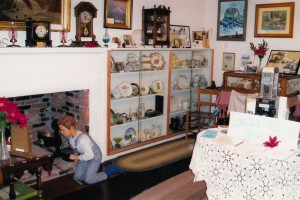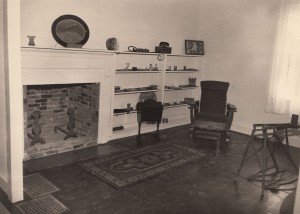Collaborating with consultants
10 April 2015 – Morgen Young
In early 2014, a small historical society outside of Portland, Oregon, circulated a request for proposals (RFP). Having received a grant from their local government, they sought to hire a curator for a one-year contract. The duties of the curator included: inventorying and assessing collections, developing and implementing a policy and procedural structures for managing collections, creating an interpretative plan, developing a public services strategy, and staffing the museum every weekend.
The historical society, which first formed in the 1930s, opened a museum and research library in 1975. It is an all-volunteer-run organization. While the board of directors and the members are very invested in the organization, no one involved has professional museum, historical, or archival training. With volunteer curators at the helm in the past, the historical society acquired a large amount of artifacts, archives, and library materials. However, many of these items fall beyond the mission of the historical society. Additionally, the historical society faced many challenges in terms of sustained funding, display and storage space, and collections maintenance.

As the collections grew, so did the amount of materials on display. This is the same room in 2003. It looked nearly identical when our contract began. Photo credit: Morgen Young
Two colleagues–Maija Anderson, an archivist, and Val Ballestrem, a public historian–approached me about potentially collaborating. Individually, we each brought skills that would enable us to meet some, but not all, of the goals set forth in the RFP. Given that the needs of the historical society were so broad, we felt that the project was best approached by a team of professionals with complementary skills, under the direction of a project manager who would serve as primary contact to the board. Because I have a small consulting business, we decided to submit a proposal under my company, and if we were awarded the project, I would serve as the project manager and subcontract with Maija and Val.
We met with the historical society board, who were initially hesitant about our unique structure. We persuaded them by explaining that by having three professionals tackle the role of curator, they were getting more expertise. Additionally, we committed to delivering a five-year plan for the board to approve and implement, on top of the original RFP goals.
We were awarded the contract last March and just recently completed a year’s worth of work. It was a challenging but rewarding project. We delivered everything outlined in the original RFP, as well as the five-year plan, four new exhibits, and an enlarged and restructured research library.

We developed new interpretation for the first floor of the museum, including a temporary exhibit that examined business and industry in the area and a permanent time line. Photo credit: Morgen Young
By collaborating, we were each able to contribute our specific areas of expertise, but it also afforded us opportunities to learn new skill sets. Additionally, we had time to pursue other projects and contracts during the same time period. Had one of us received the contract, we would have had to turn down other consulting opportunities or experienced workload and scheduling conflicts with current employers.
Maija and I will discuss the project further at the National Council on Public History’s annual meeting in Nashville. Join us on April 16 from 3:30 to 5:30 pm for the panel discussion, “Breaking Down Professional Barriers: Collaborations Between Historians and Archivists.”
~ Morgen Young is the owner of Alder, LLC, a public history consulting company. Her work focuses on historical research, writing, exhibit development and curation, oral history, and photography.




